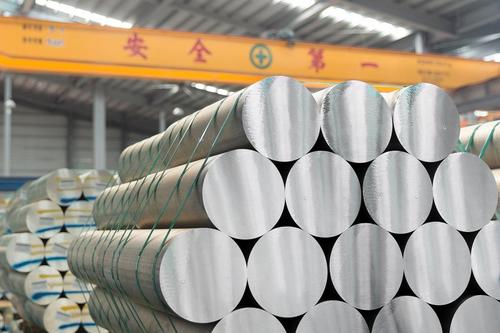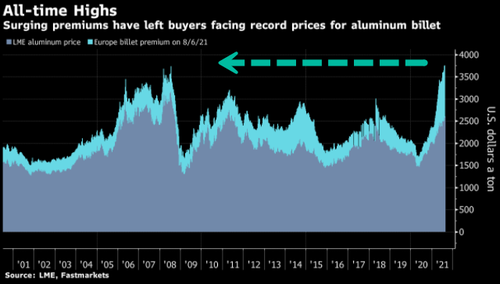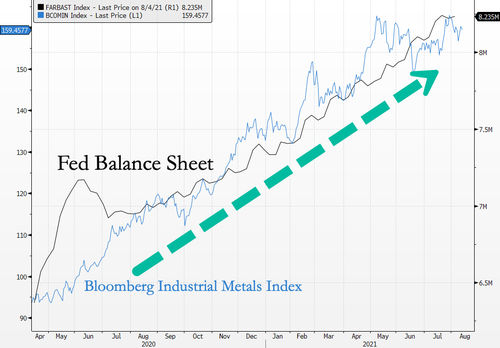Another Industrial Metal Hits Record High Prices: Aluminum Billet
Commodities, including industrial metals, have exploded to the upside due to an unprecedented amount of pandemic-driven government stimulus. The latest metal to hit news highs is a specialized aluminum known as billet.
The aluminum billet is used in several applications such as automotive, transport, buildings, heat transfer, general engineering, electronics, and aviation.
With central banks and governments flooding the world with stimuli, supercharging the global economy, along with tight supplies due to supply chain disruptions, prices of aluminum billet have leaped to all-time highs, according to Bloomberg data.
Aluminum spot prices are up more than 30% on the London Metal Exchange this year. Buyers are paying an even higher premium over futures to obtain aluminum billets. Bloomberg shows in the chart below that combined price and premium for buyers in Europe now exceeds $3,750 a ton, the highest ever, taking out the highs in 2007-08.
Bloomberg explains several factors for the surge in the industrial metal:
Aluminum’s rally has been driven by a rebound in construction as economies open, and supply issues including power shortages that dented Chinese output. For the coming years, analysts and traders expect further gains as usage in electric vehicles and renewables accelerates and China cracks down on energy-intensive industries. Goldman Sachs Group Inc. forecasts futures prices to hit a record by late next year.
In a recent webinar organized by Commodities People, Andrew Busch, an economist with the Bank of the Philippine Islands, said a “massive wall of money and momentum in the US economy is driving demand for commodities.”
Below we show how the Federal Reserve’s balance sheet expansion has been bullish for the Bloomberg Industrial Metals index.
The question we have: What happens to industrial metal prices if Democrats and the Biden administration can push through a multi-trillion dollar infrastructure spending bill?
Indeed this would exacerbate inflationary forces and force commodity prices even higher.
Here’s what the ING Commodities desk had to say about this:
The metals complex regained some buoyancy on Wednesday after the US Senate passed a US$550 billion infrastructure plan, sparking some optimism for US metals demand. However, the bill may face further hurdles in the House, which is scheduled to be on a break until 20 September. Meanwhile, a slightly weaker dollar after US inflation data provided further support to metals. Copper was the exception, with LME prices closing lower yesterday due to a reduced risk premium after mining company, BHP, reached a preliminary wage agreement with the union representing miners at its Escondida mine. The agreement will be put to a vote and must be signed by union leaders by Thursday. In addition, the Caserones copper mine in Chile continues to operate despite a strike by one of its biggest unions which began on Tuesday, as members of other unions continue to work.
Tyler Durden
Thu, 08/12/2021 – 21:45
via ZeroHedge News https://ift.tt/2VRMJAr Tyler Durden


